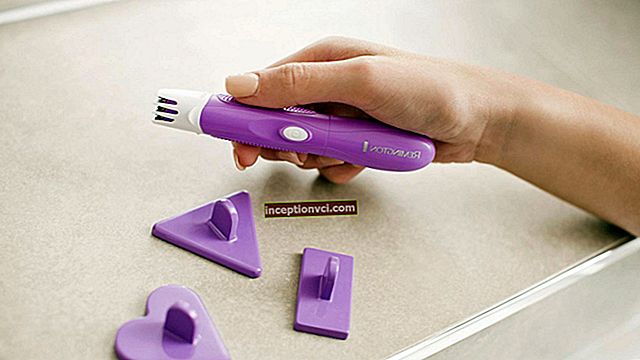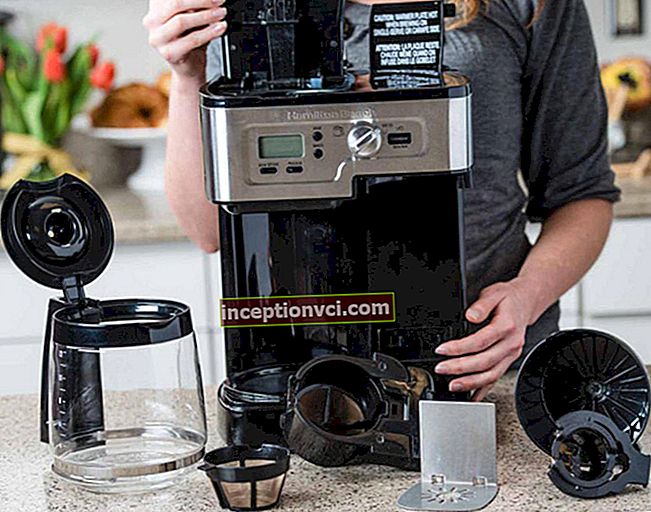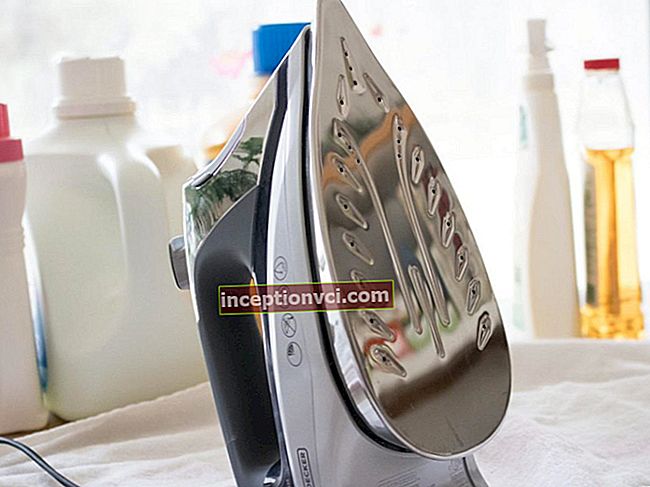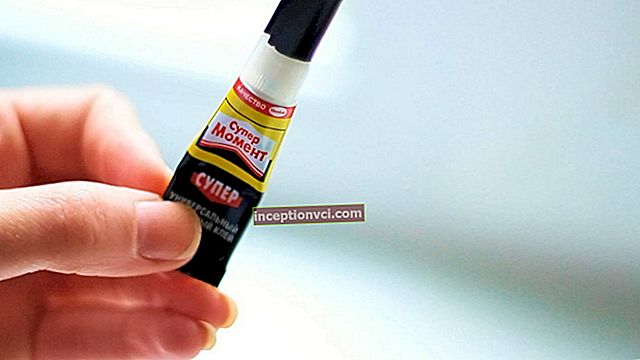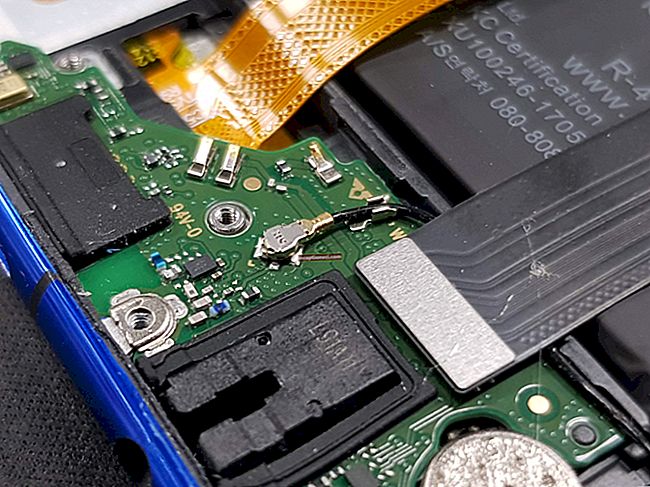Contents of delivery
The scope of delivery includes only the essentials. For little money, we get a device with a variable weight system, as well as allowing us to change the resolution of the sensor during operation.

After opening the packaging, painted in the typical A4Tech colors, we will see:
- mouse;
- a set of seven weights;
- mini CD with software;
- 2 sets of pads for smooth sliding on the work surface.
A4Tech XL-740K is not a small device. I would venture to say that some users with small palms will feel a little discomfort while using the device.
The mouse is equipped with six buttons and a scroll wheel, which also acts as an additional button here, which can be activated by pressing the scroll down. The scroll does not have a side tilt function. There are no complaints about the operation of the scroll wheel, the scroll movement is light, but clear and smooth. According to the manufacturer, the main advantage of the mouse is the 3xFire button, which allows you to make three "shots" in a minimum period of time.

But using this button will not be convenient for everyone, because of the impressive size of the mouse, some users will need to move their entire hand forward in order to reach this button. In dynamic games, this action is undesirable, since every second is precious during the game. But the indicated drawback can be "circumvented". Thanks to the X7 Oscar Editor software, you can create a script that will be "assigned" to any mouse button (this means that the function of the 3xFire button can be assigned to any other button). The buttons located on the left side of the case are best suited for this. One of them has raised points on the surface, which should help distinguish it from the second, which has a smooth surface.

The rubber cover, which by definition should prevent the thumb from accidentally slipping off, does a pretty poor job and is a good place to collect dust.

The main keys are large, and their use is accompanied by a rather loud click. The key travel seems to be too long.
The last button is the button that is used to change the resolution on the fly. It is made of transparent plastic, under which there are LEDs informing about the current settings. Its location is well thought out and excludes the possibility of accidental pressing during the game.
At the bottom of the device there are five pads to facilitate sliding on the work surface. Unfortunately, the add-on kit is provided by the manufacturer with a fairly small amount of glue, and as a result these elements tend to fall off.

Also striking is the large cover, behind which there is a "magazine" designed for installing special weights in it. To remove the cover, you need to turn it counterclockwise. Up to seven weights can be inserted into the resulting hole, the total weight of which is 18.5 grams. The "magazine", into which metal weights are inserted, weighs 1.5 grams, which in total gives us the opportunity to weight the mouse by 20 grams.

The smallest (but most important) element at the bottom of the device is the laser sensor. The "eye" of the sensor is located in the center of the sticker, where you can see: the manufacturer's logo, model name, and the name of the country of manufacture of the mouse.

We have reviewed the design features of the XL-740K model, and now proceed to describe the main functions of the software.
A4Tech has made sure that users receive a software package that will make it easier to work with the device even the most demanding of them.For this, a functional device control center was developed, which is called the X7 Oscar Editor.
Software
The main window of the program looks like this:

Here we can load an existing profile or save one that we will create ourselves. There are also options such as import and export, which will greatly facilitate our work with the program.
All buttons (except for the left one) are configurable. Clicking on the arrow next to the numbered keys 2 to 5 will open a context menu containing the available functions.
We are offered a huge number of settings to choose from, which can be used both in office applications and in games. We have at our disposal such opportunities as: control of programs, browser, media player, basic functions of a text editor and others. The manufacturer has also prepared a number of ready-made scenarios for the Counter-Strike game. If this is not enough, you can use the macro editor to create your own commands. The Macro Editor has proven to be a very powerful tool.

The program has a very interesting option - Mouse Gestures, thanks to which we can configure 16 functions that will be executed when the selected key is pressed (or when the mouse moves accordingly). This add-on greatly facilitates daily work.
The manufacturer claims that the device is equipped with a button that allows you to change the resolution value during operation. This feature will be especially useful in games where we can quickly change the sensor accuracy settings, for example, for a machine gun or a sniper rifle. It is also possible to change the resolution value for each coordinate axis. The Color Indicator column shows the colors that the button is highlighted with when one of the options is selected. This allows you to quickly find out what resolution is currently being used.

Another interesting option is the support for two additional "directions" that can be controlled by scrolling. When the cursor is on the left side of the specially divided screen, the reaction to the rotation of the scroll wheel is standard - up or down. However, when you move the mouse to the other side of the screen, rotating the scroll will cause the image on the monitor screen to move horizontally. This is a very convenient solution for working with spreadsheets or graphics that have high resolution. In this window, we can also change the settings according to our preferences, including the ability to completely disable the 4D Wheel option.
The characteristics of the device look promising, but you need to make sure that the data that the manufacturer claims matches the actual readings. For this purpose, we will use the vMouseBench program version 0.0.7, and as a mat we will use Revoltec FightMat Precision Basic.
Synthetic tests
Before we move on to checking the parameters, let's see what values are indicated in the proprietary software from A4Tech:




In the presented pictures you can see that the result for each option, if not ideal, is very close to the specified data transfer parameters. The standalone software shows slightly different numbers. Here is the result for a value of 125 Hz:

As you can see, factory data has little to do with reality. With such a small nominal value, the loss is 50 Hz. Unfortunately, subsequent tests were even worse. Frequency losses were more and more each time. For 250 Hz, the loss was almost 100 units, and with the declared value of 500 Hz, the actual value was 307 Hz. At the very end, the "highlight" is the test result of the highest available value of the sensor position update rate:

Look at the intermediate results, which are surprising - the values of 900 and 400 Hz appear alternately, which speaks not in favor of the stability of operation at extreme refresh parameters for this device. The first part of testing can be considered complete. Let's move on to the next test, in which we will measure the actual resolution at which the sensor is operating.
The test consists in moving the mouse to the distance set in the program. After reading the position of the sensor at the start and end points, the actual resolution of the device can be calculated (which, of course, the computer does for us).
This time there is nothing to complain about - the declared values have been confirmed. The attempts were repeated several times to ensure that the result was reliable. Each time, a difference of +/- 75 DPI was obtained, which is quite normal, given that the tests are carried out by a person, and not by a machine that is capable of performing movements of the same accuracy even a thousand times.
The last test that this software allows is to check for interpolation. The essence of the test is to draw a straight line and make sure there are no side effects such as distortion of the drawn object, as well as the absence of white dots on the line.

2000 DPI

3600 DPI
Up to 2000 DPI the mouse felt very good - I did not notice any unwanted cursor jumps and line breaks. Unfortunately, anything above this value was worse. In my opinion, I achieved the best results at resolutions up to 2000 DPI. Up to this point, the sensor has not had any problems when working with the mat. To get a more detailed picture, a similar test was performed on a tabletop.
Obviously, in the second case, the result obtained turned out to be much worse than while working on the rug. But let's not be surprised, because laser mice are not designed for use on wooden surfaces.
Finally, it remains only to check the "tendency" of the device to manifest the reverse acceleration. If there is one, then during fast movement the cursor will change its position and will not be where it should be according to our plan. This test was carried out on the "battlefield" - in the game Counter-Strike. The sight was set on a specific object, and then moved to the side with a quick movement of the mouse. The reverse movement was carried out slowly. Unfortunately, the result was unsatisfactory - the second movement showed an offset of about 10 degrees, which negatively affects the accuracy during the game.
Operating experience
I will try to describe my impressions of my long experience with the XL-740K. As I wrote earlier, the mouse has an impressive size, which is why people with small palms may feel some discomfort while working with it. The only correct grip is the palm grip. The claw grip can be inconvenient even for users with large hands as the device is heavily profiled.
The mouse was used for a variety of tasks - from browsing the Internet and working with a graphics editor to FPS games. If the device suits perfectly for the first two tasks, then I would not recommend using this mouse for games. It is no secret that it is equipped with a rather old sensor, and in dynamic games the most important thing is accuracy and correct positioning of movements. In my opinion, the XL-740K is a model designed for those users who value, first of all, everyday comfort at work. For professional gamers, I recommend looking for something of a higher class, since this mouse will not meet all your requirements.
Praise deserves the "mikriki" that are used in the buttons, as well as in the scroll wheel. Even though they work loudly, I have not had any problems with their work.The scrolling, despite the "hundred thousand" scrolled pages, behaves perfectly - it always responds to pressing, and the resistance during scrolling is still very good.
Advantages:
1. Convenient form.
2. High-quality work of "mikriks" (good pressure).
3. Availability of variable weight system.
4. Ability to change the resolution during operation.
5. Very functional software.
Disadvantages:
1. The mouse is not suitable for users with small hands.
2. Poor quality rubberized coating.
3. Outdated sensor model.
4. The refresh rate does not match the declared values.
Pay attention to other gaming mice from the manufacturer: A4Tech X-748K, A4Tech XL-747H, A4Tech XL-750BH, A4Tech F5 V-TRACK.
